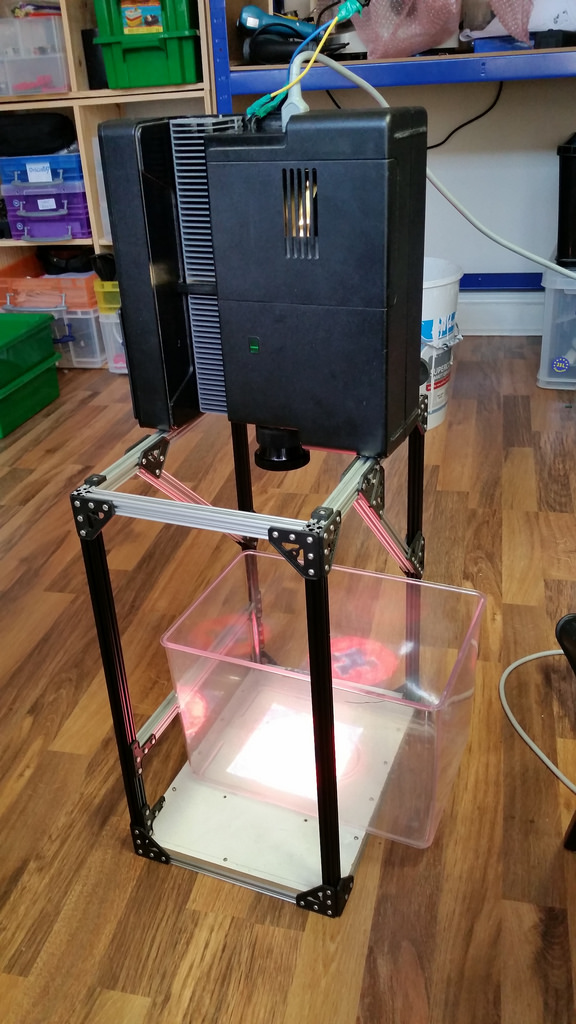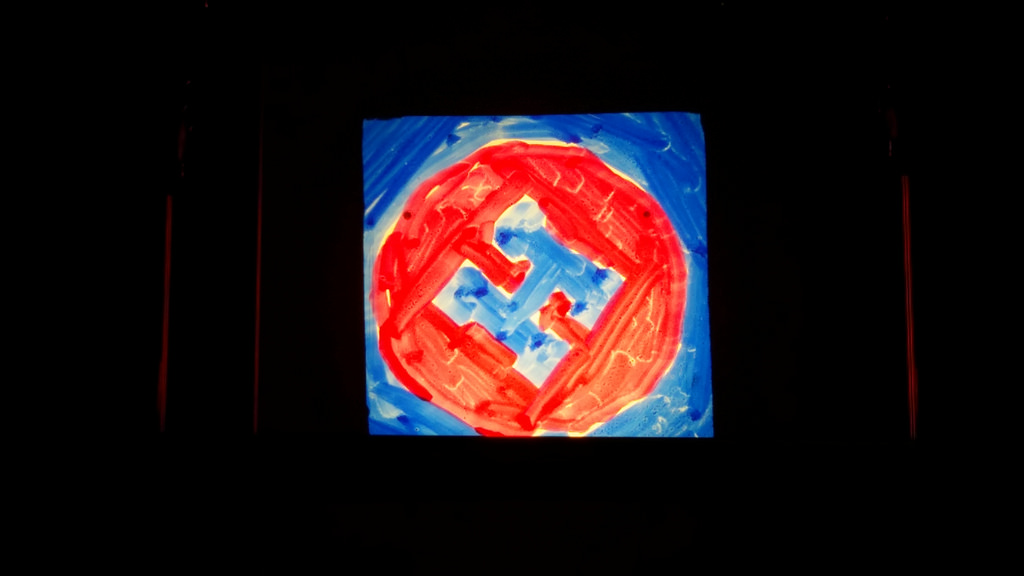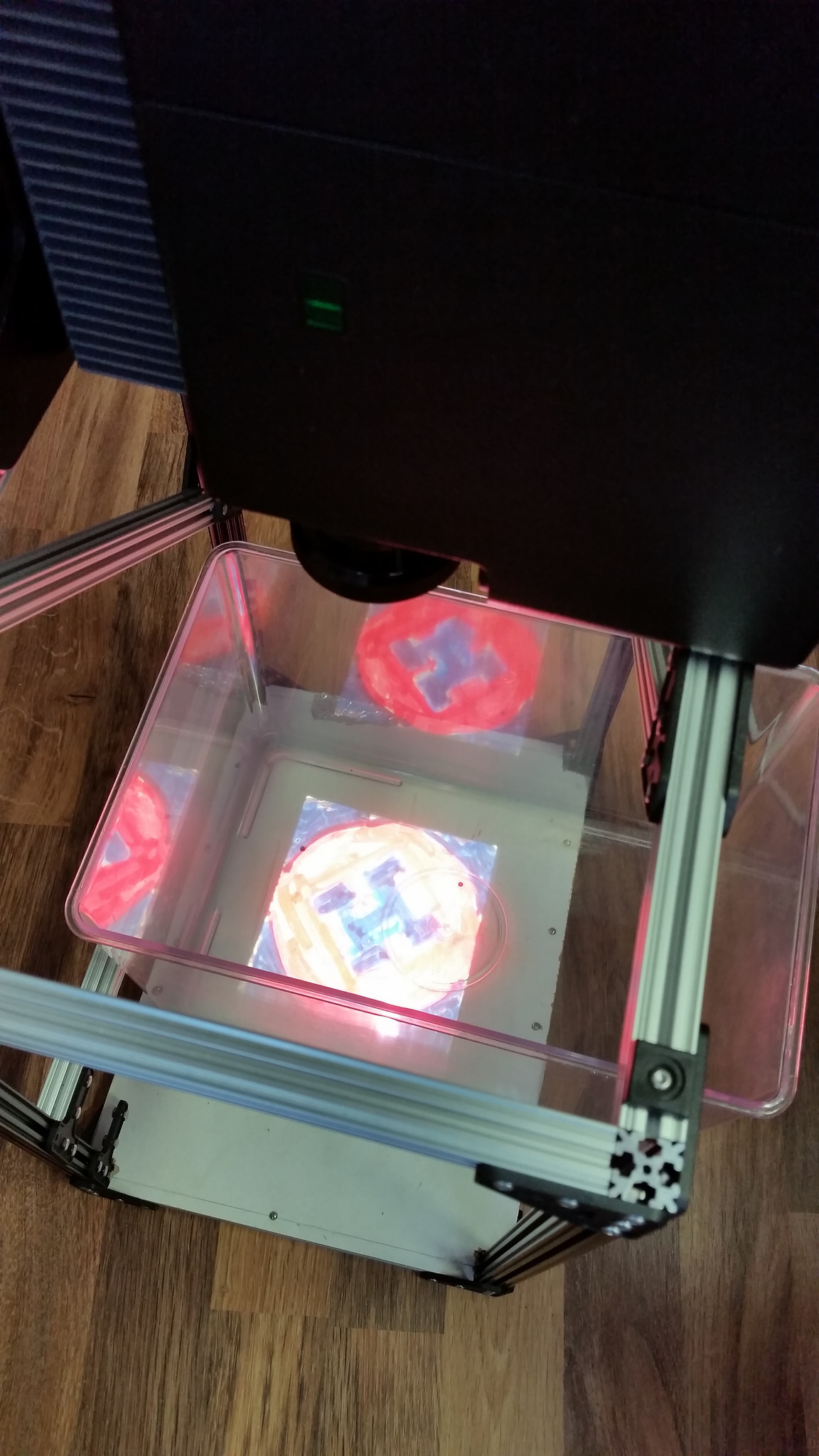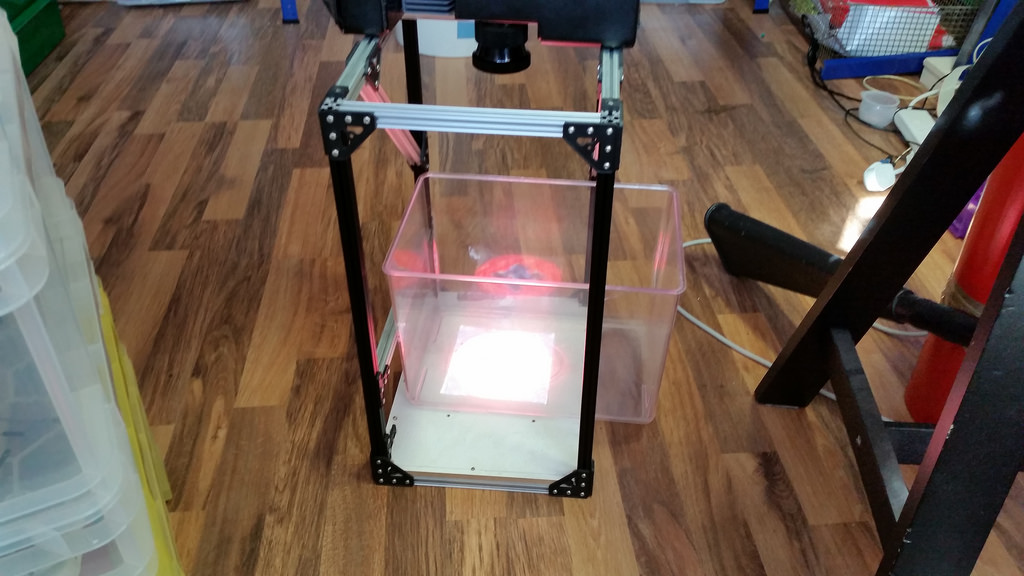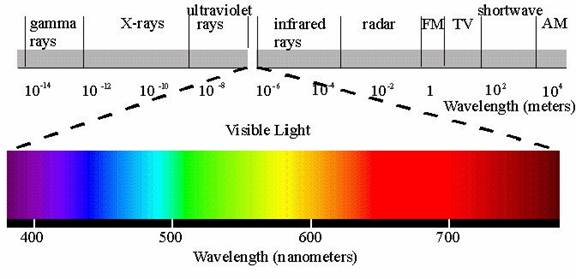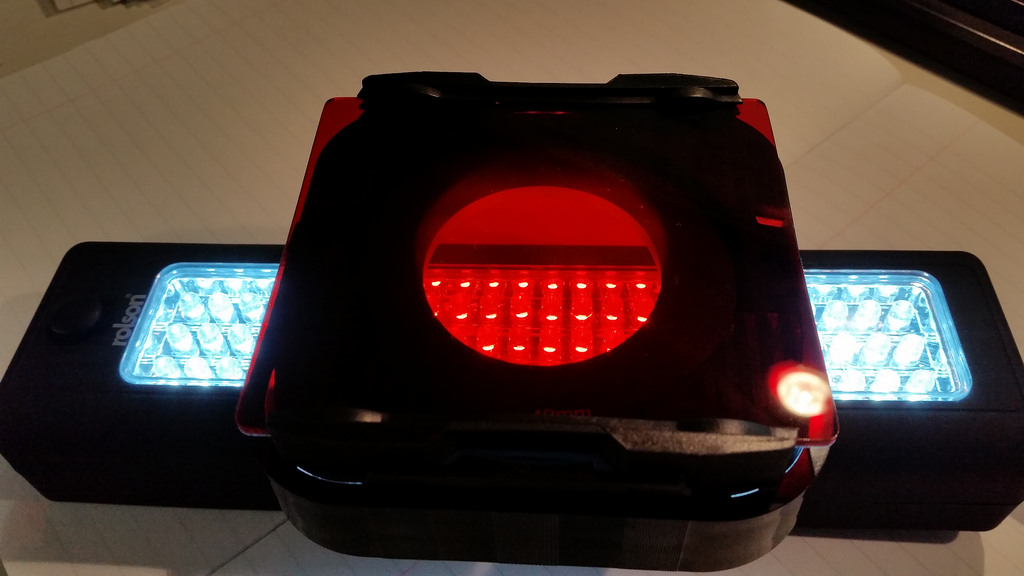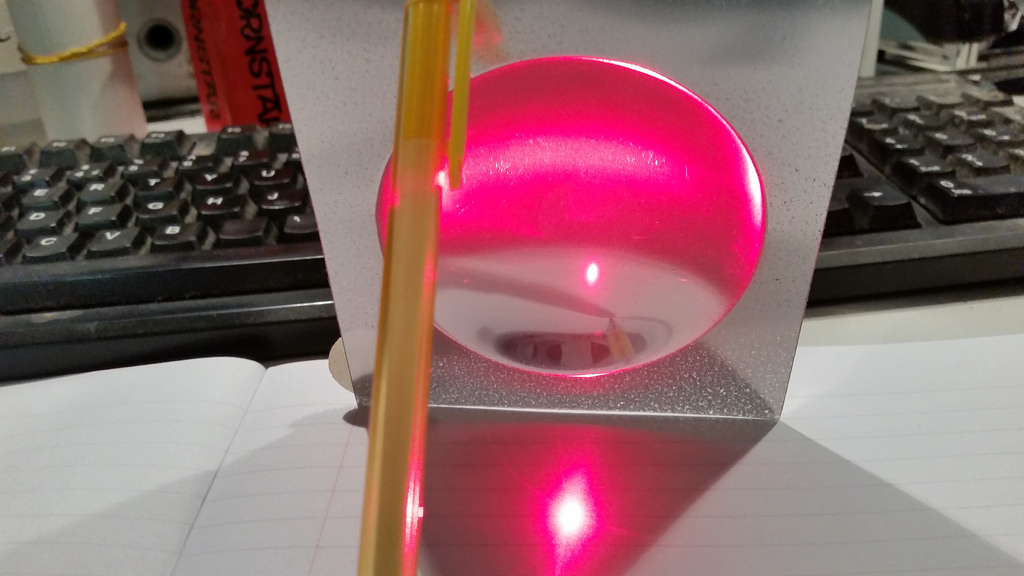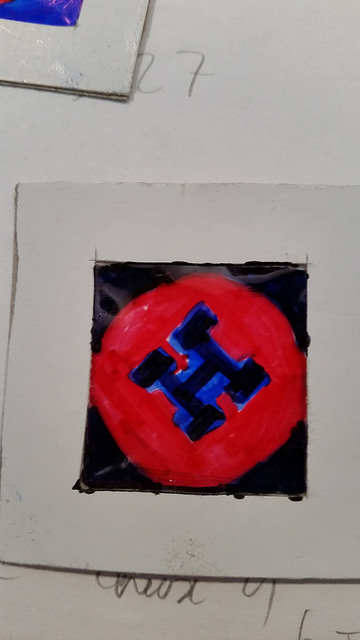Team:London BioHackspace/Printer Hardware
From 2014.igem.org
(→Methods) |
(→Results) |
||
| Line 54: | Line 54: | ||
| + | In the end, a diy 35mm slide was the best way to project red light easily. | ||
| + | [[File:15446012882 3495bcc65b z.jpg]] | ||
| + | |||
| + | ==Conclusions & future work== | ||
| + | |||
| + | Would probably spend more time making a slide that was closer to a perfect 660nm filter. | ||
| + | |||
| + | I didn't leave the slide under the projector for very long as I feared it would melt. I think a professionally manufactured slide might be more resilient. | ||
Revision as of 00:56, 18 October 2014
| Home | Project | Team | Policy & Practice | Protocols | Safety |  |
Contents |
Intro
The basic proposal for juicyprint is the growth of cellulose by bacteria under the control of light. The 660nm light that the Cph1 protein is sensitive to inhibits the growth. Therefore we designed a system to generate the production of a pellicle sheet in the shape of a projected template of the negative image.
| So a light pattern like this | should result in a pellicle growth pattern like this |

| 
|
Aim
The primary aim is to demonstrate a mechanical system which can be used to provide a light source and as a basic proof of concept.
This is a gallery of a series of images from basic prototypes and some initial tests
Methods
We were unable to fully test the system with the target system. Therefore we simulated the process with just a liquid target.
660nm light is a bright red colour;
Image courtesy of Beer Color Laboratories;
http://www.beercolor.com/color_basics1.htm
We tested a number of light sources to be able to generate 660nm patterns easily.
Results
A thick 660nm camera filter gets very hot when placed near the projector for a period of time.
Therefore I settled on using a home-made red permanent marker pen to make a 35mm slide suitable for projection. The slide was much thinner and didn't absorb so much light and get hot.
In the end, a diy 35mm slide was the best way to project red light easily.
Conclusions & future work
Would probably spend more time making a slide that was closer to a perfect 660nm filter.
I didn't leave the slide under the projector for very long as I feared it would melt. I think a professionally manufactured slide might be more resilient.
London Biohackers
 "
"
